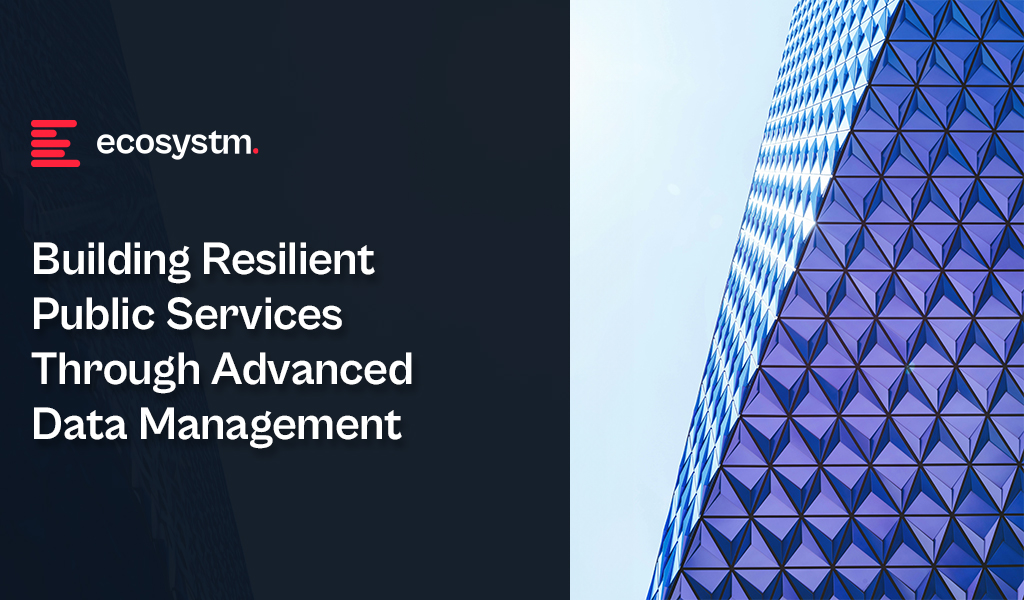In my previous blogs, I outlined strategies for public sector organisations to incorporate technology into citizen services and internal processes. Building on those perspectives, let’s talk about the critical role of data in powering digital transformation across the public sector.
Effectively leveraging data is integral to delivering enhanced digital services and streamlining operations. Organisations must adopt a forward-looking roadmap that accounts for different data maturity levels – from core data foundations and emerging catalysts to future-state capabilities.
1. Data Essentials: Establishing the Bedrock
Data model. At the core of developing government e-services portals, strategic data modelling establishes the initial groundwork for scalable data infrastructures that can support future analytics, AI, and reporting needs. Effective data models define how information will be structured and analysed as data volumes grow. Beginning with an Entity-Relationship model, these blueprints guide the implementation of database schemas within database management systems (DBMS). This foundational approach ensures that the data infrastructure can accommodate the vast amounts of data generated by public services, crucial for maintaining public trust in government systems.
Cloud Databases. Cloud databases provide flexible, scalable, and cost-effective storage solutions, allowing public sector organisations to handle vast amounts of data generated by public services. Data warehouses, on the other hand, are centralised repositories designed to store structured data, enabling advanced querying and reporting capabilities. This combination allows for robust data analytics and AI-driven insights, ensuring that the data infrastructure can support future growth and evolving analytical needs.
Document management. Incorporating a document or records management system (DMS/RMS) early in the data portfolio of a government e-services portal is crucial for efficient operations. This system organises extensive paperwork and records like applications, permits, and legal documents systematically. It ensures easy storage, retrieval, and management, preventing issues with misplaced documents.
Emerging Catalysts: Unleashing Data’s Potential
Digital Twins. A digital twin is a sophisticated virtual model of a physical object or system. It surpasses traditional reporting methods through advanced analytics, including predictive insights and data mining. By creating detailed virtual replicas of infrastructure, utilities, and public services, digital twins allow for real-time monitoring, efficient resource management, and proactive maintenance. This holistic approach contributes to more efficient, sustainable, and livable cities, aligning with broader goals of urban development and environmental sustainability.
Data Fabric. Data Fabric, including Data Lakes and Data Lakehouses, represents a significant leap in managing complex data environments. It ensures data is accessible for various analyses and processing needs across platforms. Data Lakes store raw data in its original format, crucial for initial data collection when future data uses are uncertain. In Cloud DB or Data Fabric setups, Data Lakes play a foundational role by storing unprocessed or semi-structured data. Data Lakehouses combine Data Lakes’ storage with data warehouses’ querying capabilities, offering flexibility, and efficiency for handling different types of data in sophisticated environments.
Data Exchange and MOUs. Even with advanced data management technologies like data fabrics, Data Lakes, and Data Lakehouses, achieving higher maturity in digital government ecosystems often depends on establishing data-sharing agreements. Memorandums of Understanding (MoUs) exemplify these agreements, crucial for maximising efficiency and collaboration. MoUs outline terms, conditions, and protocols for sharing data beyond regulatory requirements, defining its scope, permitted uses, governance standards, and responsibilities of each party. This alignment ensures data integrity, privacy, and security while facilitating collaboration that enhances innovation and service delivery. Such agreements also pave the way for potential commercialisation of shared data resources, opening new market opportunities.
Future-Forward Capabilities: Pioneering New Frontiers
Data Mesh. Data Mesh is a decentralised approach to data architecture and organisational design, ideal for complex stakeholder ecosystems like digital conveyancing solutions. Unlike centralised models, Data Mesh allows each domain to manage its data independently. This fosters collaboration while ensuring secure and governed data sharing, essential for efficient conveyancing processes. Data Mesh enhances data quality and relevance by holding stakeholders directly accountable for their data, promoting integrity and adaptability to market changes. Its focus on interoperability and self-service data access enhances user satisfaction and operational efficiency, catering flexibly to diverse user needs within the conveyancing ecosystem.
Data Embassies. A Data Embassy stores and processes data in a foreign country under the legal jurisdiction of its origin country, beneficial for digital conveyancing solutions serving international markets. This approach ensures data security and sovereignty, governed by the originating nation’s laws to uphold privacy and legal integrity in conveyancing transactions. Data Embassies enhance resilience against physical and cyber threats by distributing data across international locations, ensuring continuous operation despite disruptions. They also foster international collaboration and trust, potentially attracting more investment and participation in global real estate markets. Technologically, Data Embassies rely on advanced data centres, encryption, cybersecurity, cloud, and robust disaster recovery solutions to maintain uninterrupted conveyancing services and compliance with global standards.
Conclusion
By developing a cohesive roadmap that progressively integrates cutting-edge architectures, cross-stakeholder partnerships, and avant-garde juridical models, agencies can construct a solid data ecosystem. One where information doesn’t just endure disruption, but actively facilitates organisational resilience and accelerates mission impact. Investing in an evolutionary data strategy today lays the crucial groundwork for delivering intelligent, insight-driven public services for decades to come. The time to fortify data’s transformative potential is now.



